Hong Kong is famous for its skyscrapers, but its natural landscapes are breathtaking. Why not explore them off the beaten track?
Hong Kong is made up of three main territories: Hong Kong Island, Kowloon and the New Territories. Renowned for housing the world’s largest number of skyscrapers, the destination also boasts an extraordinary diversity of landscapes. In fact, up to 40% of its surface area is made up of protected parks and nature reserves!
In this article, we take a look at three of Hong Kong’s most magnificent nuggets: Lamma Island, Lantau Island and Yim Tin Tsai Island. Between deserted beaches, rocky coasts, lush forests, green valleys and temples nestled in the mountains, these are clearly worth the trip.
Lamma Island: a fisherman’s paradise
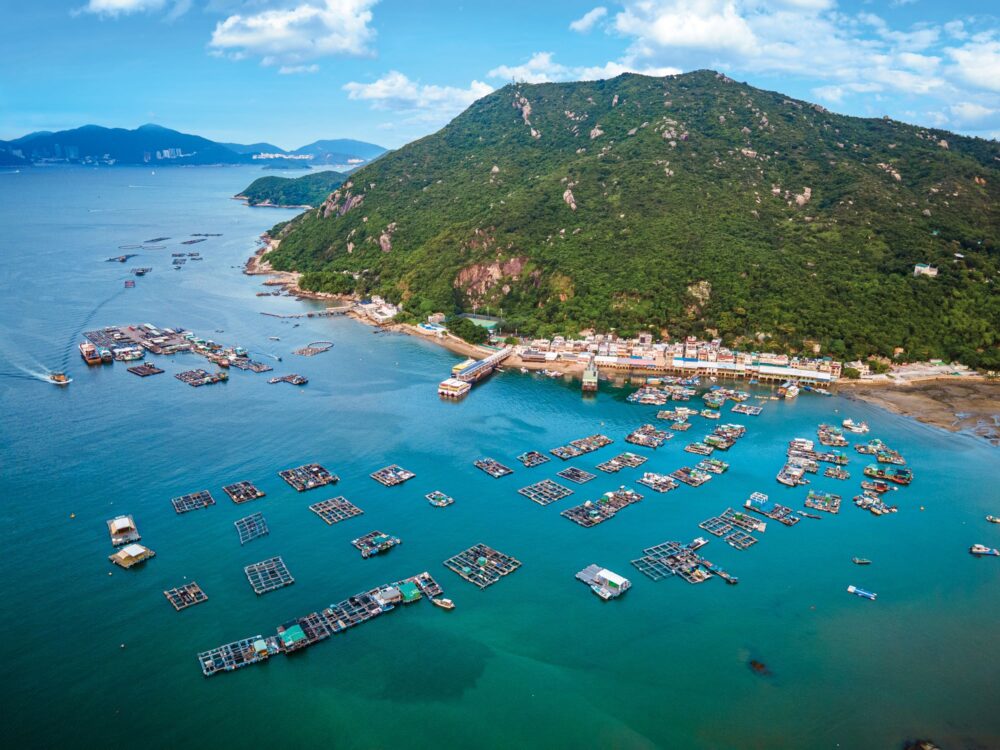
Photo credit: Hong Kong Tourism Board
- 📍 How to get there: ferry from Central Piers or Aberdeen (Hong Kong Island)
- 💙 We love: the activities on offer at Lamma Fisherfolk’s Village
Lamma Island is located just a few dozen minutes by ferry from Hong Kong Island. Historically associated with the fishing industry, you’ll arrive at the fishing village of Sok Kwu Wan. It’s home to a host of small restaurants and boutiques that line the waterfront promenade. We invite you to stroll along it: it’s a real feast for the eyes!
Not far away, Lamma Fisherfolk’s Village, a floating village, gives you an insight into the daily life of traditional fishermen. You can board an authentic junk and take part in fishing and rope-weaving workshops. Fans can watch – and take part in – the preparation of the island’s emblematic salted fish. This is clearly one of our favorite spots on Lamma.
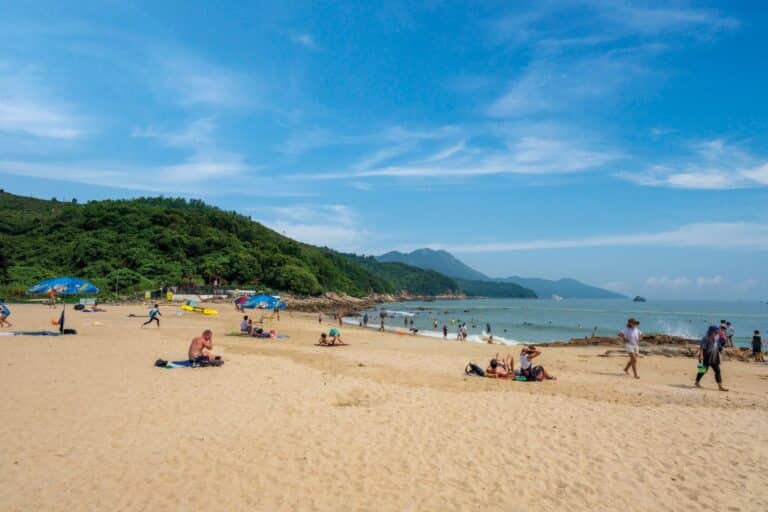
Photo credit: Hong Kong Tourism Board
Hung Shing Yeh beach is the most popular swimming spot on Hong Kong’s Lamma Island. Its position at the foot of green hills provides an idyllic setting for basking in the sun. On-site stalls offer grilled meats and iced fruit to enjoy as the sun sets. If you wish, continue on to Tai Ling Peak, home to Hong Kong’s first wind turbine. The panorama is truly remarkable.
Continue on to the fishing village of Yung Shue Wan, the island’s nerve center. Its relaxed, cosmopolitan atmosphere can be felt at every turn, especially on the main shopping street that runs along the coastline. Here, you’ll find numerous fishing-related craft stores and fish and seafood restaurants.
Lantau Island
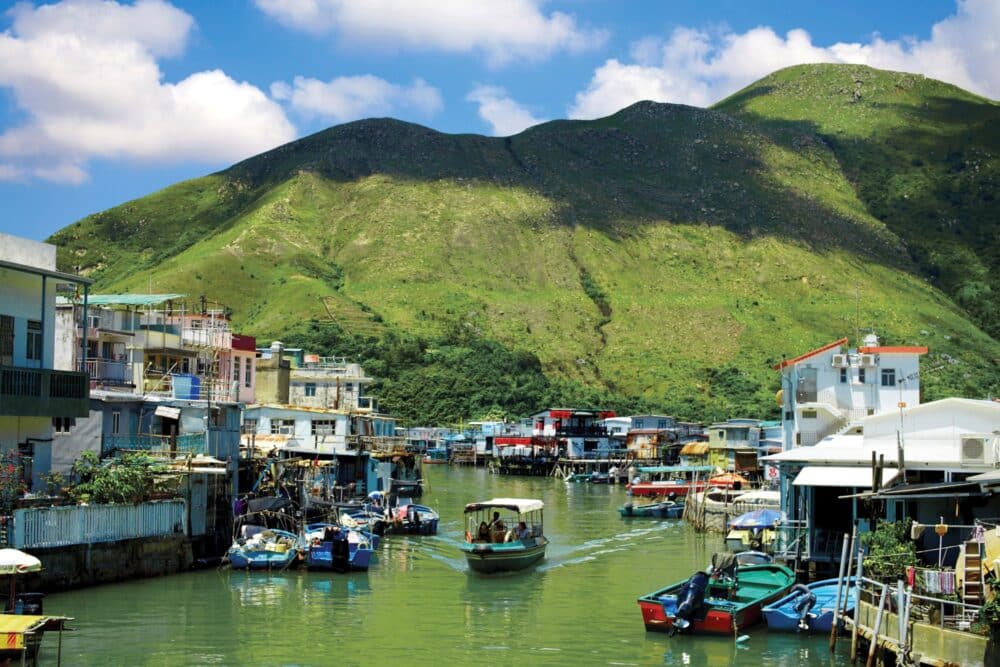
Photo credit: TSE HON NING
- 📍 How to get there: ferry from Central Piers (Hong Kong Island), metro to Tung Chung
- 💙 We love: the beauty of Cheung Sha beach
Hong Kong’s Lantau Island is a prime tourist spot. Lantau’s star attraction is the Tian Tan Buddha, a 34-meter-high sculpture. To visit it, take the Ngong Ping 360 cable car up from Tung Chung to Ngong Ping village. It offers exceptional views of the island’s verdant mountains, the Hong Kong-Zhuhai-Macao Bridge and the Great Buddha. The more adventurous will opt for the glass-bottomed cabin for guaranteed vertiginous sensations.
Then head for Tung Chung Fort. During the Second World War, this historic site was occupied by Japanese forces. Afterwards, it was used as a police station, and later as a university. The nearby Tung Chung Battery is also worth a visit.
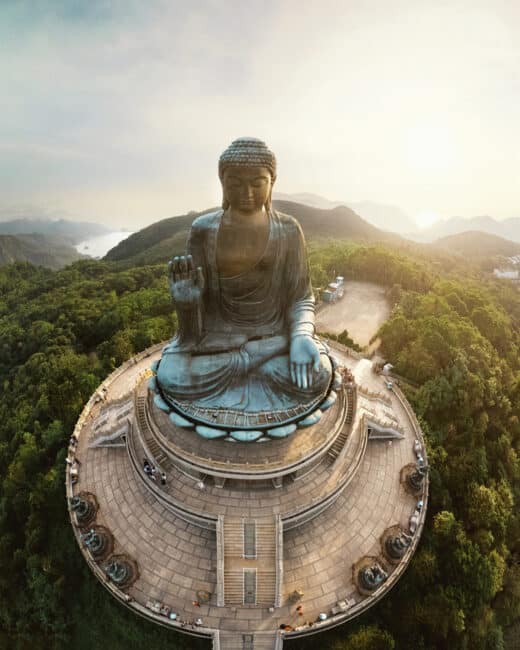
Photo credit: Hong Kong Tourism Board
A stroll to the village of Pui O and its two beaches is a must! With its three kilometers of white sand, one of them, Cheung Sha, is one of Hong Kong’s longest beaches. Here, you can enjoy a swim or one of the many water sports on offer. Then it’s on to Discovery Bay, the heart of Lantau. Here, you can admire the regattas of the local Yacht Club, go shopping or dine in top-rated restaurants.
The best way to appreciate the beauty of Lantau Island is to tackle the seventy-kilometer Lantau Trail. The route comprises 12 sections of varying difficulty, leading to Lantau Island’s 2nd highest peak, Sunset Peak. At 869 metres, it is Hong Kong’s third-highest peak. Finally, the fishing village of Tai O and its canals are a must-see.
Yim Tin Tsai Island
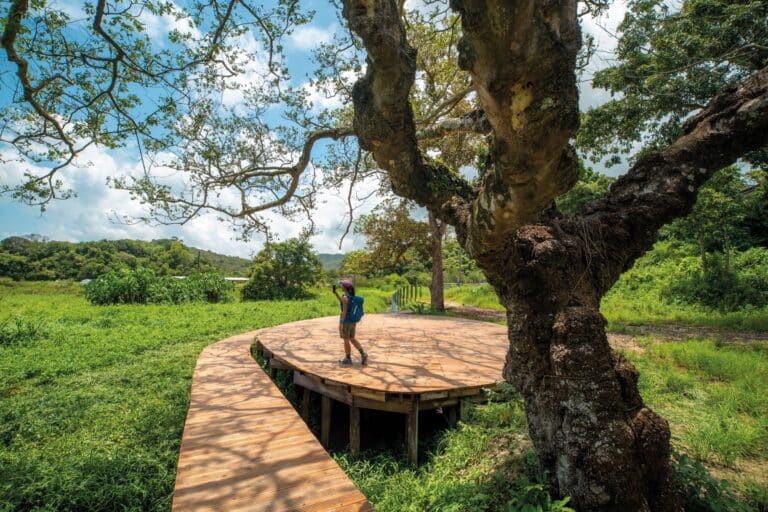
Photo credit: Hong Kong Tourism Board
- 📍 How to get there: ferry from the Sai Kung peninsula
- 💙 We love: the chance to discover Hong Kong’s only natural salt flats
Once abandoned, Yim Tin Tsai Island, just off the Sai Kung Peninsula, is now home to two Unesco World Heritage attractions. First, its salt marshes (or yim tin, in Cantonese), which inspired its name. Secondly, the elegant, century-old Chapel of St. Joseph. Its interior features a set of stained-glass windows and a red-and-white altar protected by a high ceiling. The chapel witnessed the religious conversion of the island’s Hakka villagers. The mosaic steps outside the chapel are well worth a visit.
The Yim Tin Tsai salt pans are Hong Kong’s only natural salt pans. When you go there, you’ll see “Sanctuary of Salt”, a cubic art installation representing the original shape of salt crystals. At the Salt and Light Preservation Centre, you’ll also find a souvenir store. Here you can buy bottles of Yim Tin Tsai salt and handmade soaps made from salt produced on site.
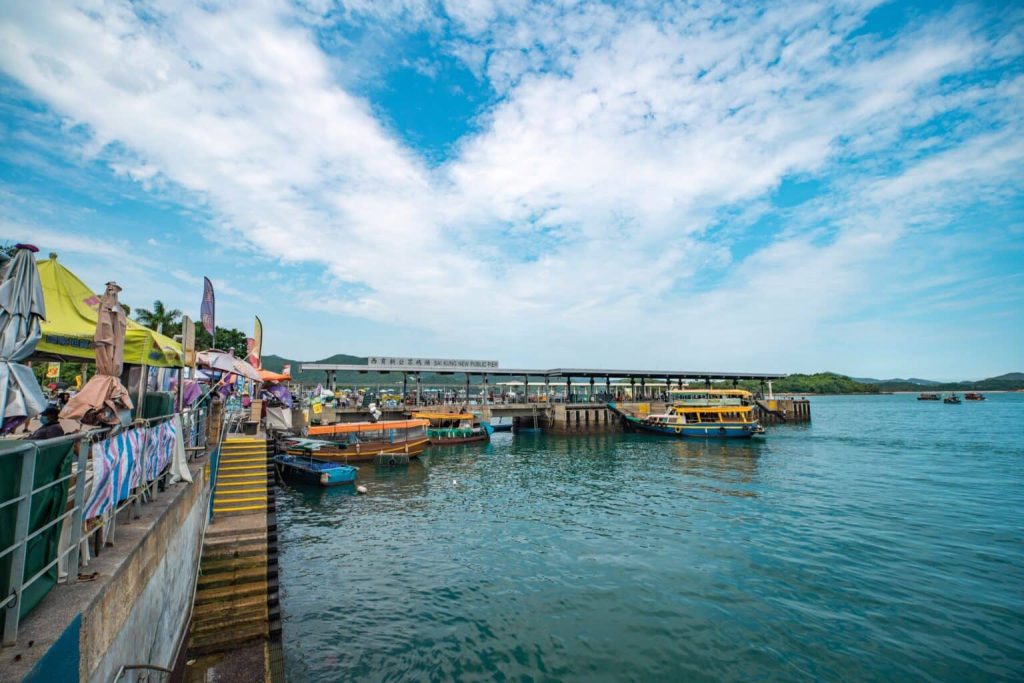
Photo credit: Hong Kong Tourism Board
Thirsty for salt? Head for Hong Kong’s last source of fresh water, the Living Water Spring. This was the island’s only water supply for centuries. To the south, the Jade Bridge links Yim Tin Tsai to the neighbouring island of Kau Sai Chau. This is one of the most picturesque spots on the island, with views of the China Sea and surrounding islands.
Continue on to the seaside town of Sai Kung. Sai Kung is the perfect place to enjoy a good meal, with a high concentration of restaurants. We invite you to sample some of Hong Kong’s iconic local specialties. Seafood, shrimp ravioli, steamed bites… A real delight!

